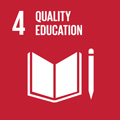- Docente: Leonardo Frizziero
- Credits: 6
- SSD: ING-IND/15
- Language: English
- Moduli: Leonardo Frizziero (Modulo 1) Simone Di Piazza (Modulo 2)
- Teaching Mode: In-person learning (entirely or partially) (Modulo 1); In-person learning (entirely or partially) (Modulo 2)
- Campus: Bologna
-
Corso:
Second cycle degree programme (LM) in
Advanced Automotive Engineering (cod. 9239)
Also valid for Second cycle degree programme (LM) in Mechanical Engineering (cod. 5724)
Second cycle degree programme (LM) in Mechanical Engineering (cod. 0938)
Second cycle degree programme (LM) in Advanced Automotive Engineering (cod. 9239)
-
from Sep 15, 2025 to Oct 29, 2025
-
from Nov 03, 2025 to Dec 17, 2025
Learning outcomes
Know and understand the fundamentals of the Virtual prototyping through the systematic approach to a complete DMU (Digital Mockup) that from the design concept leads to the engineering of a vehicle (car or motorcycle). Work independently and original, and apply multidisciplinary knowledge to the virtual design and optimization of systems and components in vehicle engineering. The student will need to learn the most advanced techniques of interaction between real and virtual prototype through the principles of human-machine interaction. Developing the ability to work within a workgroup, planning and managing the activities needed to achieve technically valid project results.
Course contents
The course aims to provide the skills and knowledge for the development of an innovative concept for new motorcycles and/or scooters.
To achieve these objectives, the program includes the following activities:
-
Definition of project objectives through Market Analysis and Competitor Analysis
-
Definition of Technical Specifications
-
Setting up the Product Architecture
-
Morphological matrix for the selection of integrated innovative solutions
-
Setting up the layout of the new motorcycle/scooter
-
3D construction of the Digital Mock-up of the new motorcycle/scooter
-
Introduction to Aesthetics-Oriented Design
-
Definition of the new motorcycle vehicle concepts
-
Virtual and physical prototyping of the concepts
The following prerequisites are required to participate in the course:
-
Advanced knowledge of 2D CAD software
-
Advanced knowledge of 3D CAD software for solid modeling
-
Advanced knowledge of 3D CAD (CAS) software for surface modeling
Please note that during the course, no class hours will be dedicated to teaching 2D or 3D modeling software, which, as stated above, must be considered prerequisites.
Readings/Bibliography
Luraschi A.G., Enciclopedia tecnica della motocicletta, Edisport Editoriale 1991
Fazi F., La Progettazione della Motocilcetta, Giorgio Nada Editore, 2013
Frizziero, L., Liverani, A., Nannini, L., Design for six sigma (DFSS) applied to a new eco-motorbike, Machines, Volume 7, Issue 3, 2019, nr. 52
Frizziero, L. et al., Application of ides (Industrial design structure) to sustainable mobility: Case study of an innovative bicycle, Inventions, Volume 6, Issue 2, 2021m nr. 22
Donnici, G. , Frizziero, L., Liverani, A. Costantini, N., Pedrielli, G., Ides (Industrial design structure) and stylistic design engineering (sde) applied to the mobility of the futur, Proceedings of the International Conference on Industrial Engineering and Operations Management (August), 2020
Further precise references will be given by the teacher during the lessons of the first block.
Teaching methods
The methods used during the course will be:
1) Subdivision of the participants into work groups of 3-4 students each
2) Assignment of the project themes relating to the automotive or motorcycle or other vehicles
3) Simulation of an industrial design process with planning, budget and design
4) Application of the main design methods such as QFD, IDeS, DFSS, BM, etc.
5) Realization of the project concept having as output aesthetic prototypes printed in 3D and / or in augmented / virtual reality
6) final presentation of the project in ppt
During the course it will be possible to attend lectures / seminars of in-depth study of theory and practice in the field of vehicle design, also held by eminent exponents of the industrial world.
Assessment methods
The exam consists in the evaluation of the final project presented in powerpoint and possibly accompanied by a digital or physical prototype.
During the course, the working groups will be required to present the progress of their work in front of the classroom, receiving from the teacher the indications to proceed towards the optimal final result. The final grade will take into account:
- quality of the project
- innovativeness of the project
- individual contribution of the student
- ability to work in a team
- overall professionalism of the working group
Teaching tools
1) Slides of Theory and References in Literature
2) Sketching software, 2D CAD, 3D CAD, rendering software
3) Possibly 3D Printing and Augmented Reality
Office hours
See the website of Leonardo Frizziero
See the website of Simone Di Piazza
SDGs




This teaching activity contributes to the achievement of the Sustainable Development Goals of the UN 2030 Agenda.
